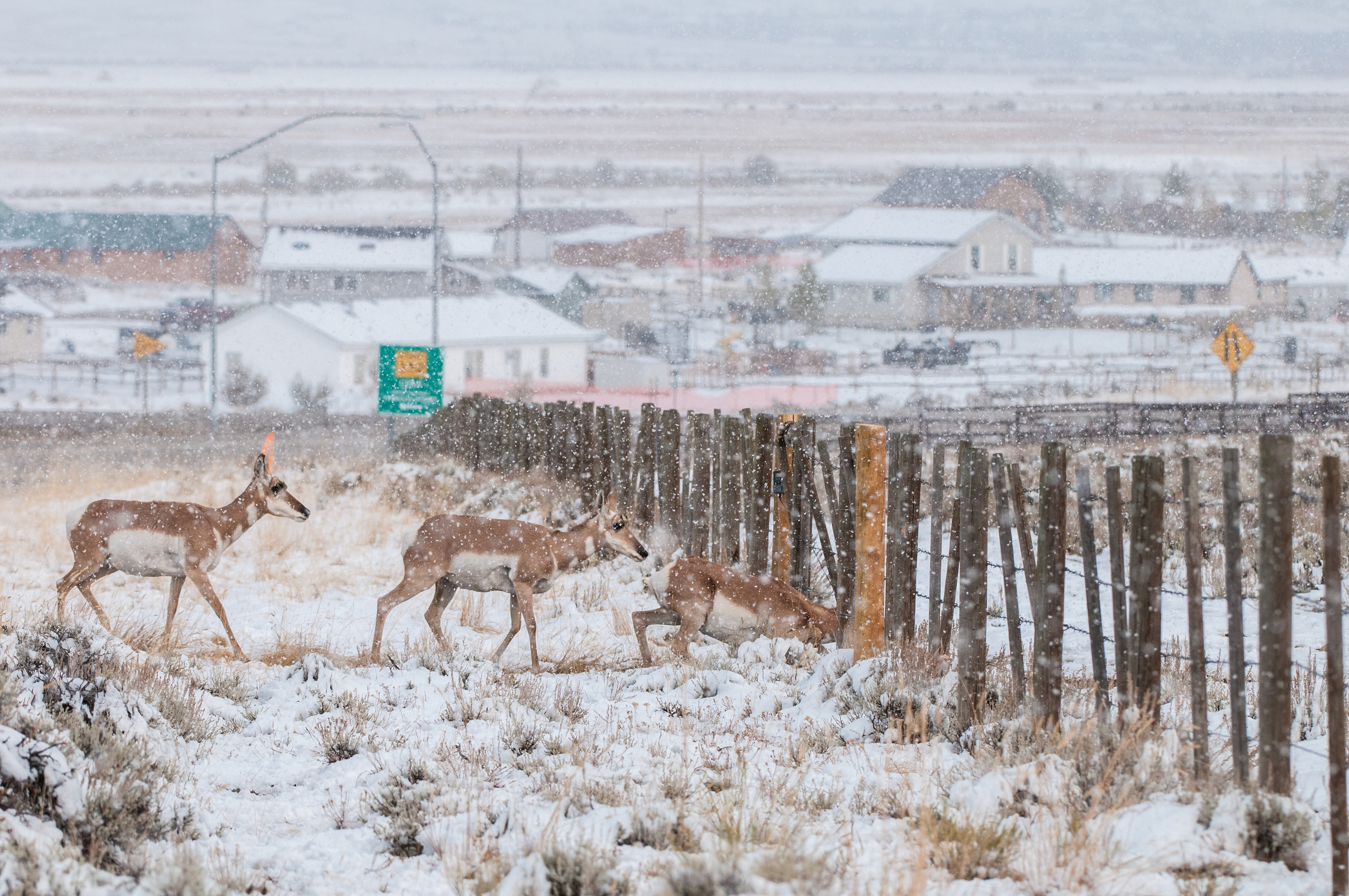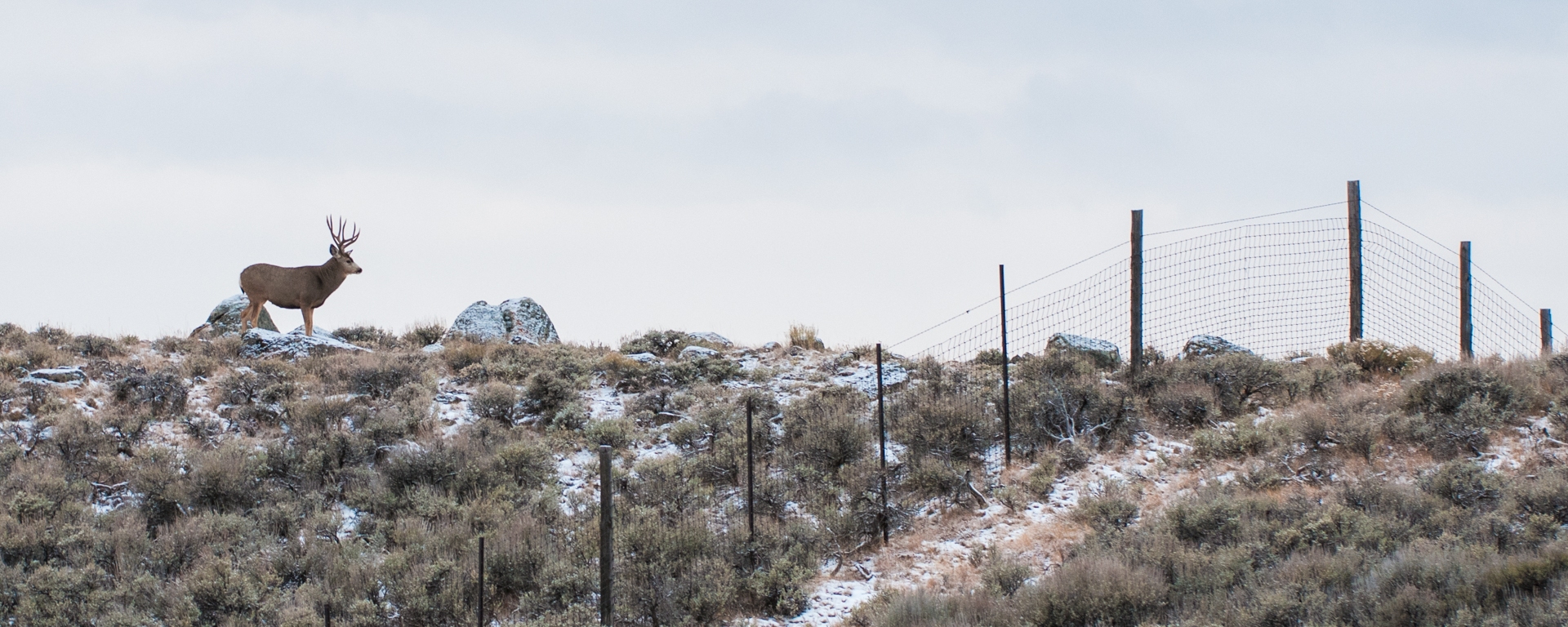Associate Editor, Marion Valeix, introduces Journal of Applied Ecology’s April Editor’s Choice article by Wenjing Xu and colleagues, which examines the behavioural responses of two migratory ungulate species to linear barriers in Wyoming, USA.
Since the dawn of civilisation, humans have used fences for protection, fortification, decoration and demarcation. The biggest and most impressive, such as the Great Wall of China, can be seen from space – but fencing is everywhere.
In agricultural landscapes, fences are used to protect livestock from predators and crops from wildlife; in suburban areas, fences are used to mark boundaries between private properties and for protection. Fences are also used for conservation purposes, to reduce road mortality, to control disease transmission, and to protect endangered wildlife from anthropogenic mortality.
Because they are so widespread and pervasive, fences have long been ‘invisible’ to scientists and conservationists. However, it is now widely accepted that fences prevent animals from moving freely in landscapes – an issue that applies to all animals, not only those which are migratory and wide-ranging.
What is less clear, however, is how animals react when they encounter a barrier or fence – do they attempt to cross by jumping over it or crawling under it? Do they seek a potential crossing point by travelling great distances alongside it? Or do they end up trapped because their natural route has been blocked?

As the human population has increased so too has our impact on and encroachment into previously wild spaces – conflicts with fences are now commonplace in many areas. A better understanding of individual-level responses to barriers, and the impact of barriers on animal movements more generally, is therefore crucial to maintaining ecosystem services and functions and identifying conservation interventions.
In their Editor’s Choice article, Wenjing Xu and her team examine the near-fence behaviour of two migratory ungulate species (pronghorn and mule deer) in western Wyoming, USA.
Combining the GPS locations of 48 animals with digital fence layers from the Bureau of Land Management, U.S. Forest Service and Wyoming Game of Fish Department, they developed a new tool (the R package BaBA – Barrier Behavior Analysis) to classify different movement behaviours in response to fences and assess the extent to which barriers alter animal mobility.

Their results show that the movement of both species was heavily impacted by barriers – with nearly 40% of encounters altering their normal movements. They found that the collared pronghorns in their study encountered a fence every 1.5 days, and the collared mule deer encountered a fence every 3 days. Pronghorns were more likely to bounce back from the barrier, whereas mule deer were more likely to move back-and-forth along the fence to seek a potential crossing. For both species, when they encountered a fence, they crossed it only 50% of the time.
This work provides empirical evidence of how barriers affect animal movement. It also has considerable management applications.
BaBA (which is available as an R package here) will help identify the barriers that are most problematic for wildlife mobility, map fencing mitigation prioritisation, and inform conservation efforts in terms of barrier management – all of which are important steps as the field of fence ecology continues to grow.
The full Editor’s Choice article Barrier Behaviour Analysis (BaBA) reveals extensive effects of fencing on wide‐ranging ungulates is free for a limited time in Journal of Applied Ecology.
